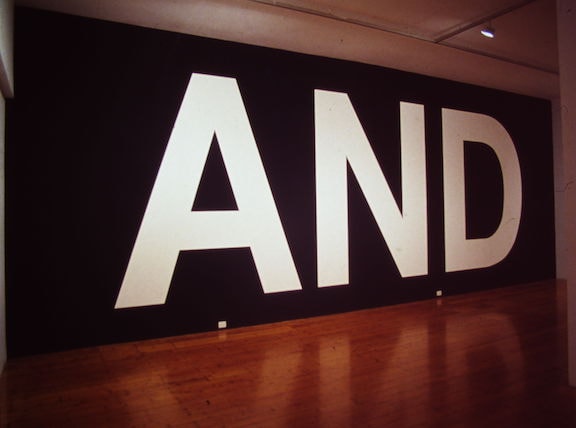exhibitions

MUTLU CERKEZ AND MARCO FUSINATO
MATLU CERKEZ AND MARCO FUSINATO
–
In 2003, Gertrude Contemporary was pleased to present the first in a series of collaborative projects by Melbourne artists Mutlu Çerkez and Marco Fusinato. Exemplary artists in the field of conceptual art, Mutlu Çerkez and Marco Fusinato had each previously developed exhibition projects and performances for an extensive range of prestigious museums, galleries and biennial exhibitions in Australia and internationally. The exhibition Mutlu Çerkez AND Marco Fusinato ensured a focussed consideration of each artists’ respective practice, in order to introduce the idea of them working together. Rather than conforming to the conventional understanding of collaboration where the individual work/identity of an artist is superceded by the synthetic conjunction of their respective practices — the so-called ‘third-hand of ‘collaboration’ — the ‘AND’ here implied the AMPLIFICATION of their respective practices, with one artist’s work invoked to elaborate the ideas and form of the other. In this sense, 1+1=2, not 3.Çerkez and Fusinato’s insistence on the ‘AND’ was also understood as a critique of curatorial practices which have tended to cast their work as incommensurate and incompatible.
Crossing the thresholds of representation and the real, painting and performance, the work of Çerkez and Fusinato has in fact been closely related through their systematic resort to predetermined and culturally-given forms of expression — the adoption of conventional formats and the ‘standard issue’ for example — as well as through their interest in ‘realist’ rather than ‘symbolic’ forms of art practice. As a painter, Çerkez adopted the standard conventions and genres of the discipline — still-life, self-portrait, landscape and history painting — according to the project at hand.
In Fusinato’s case, it is the form and process of painting itself — literally (monochrome) paint applied to a painting support — which has informed the nature of his work. A monochrome painting, and a still-life or self-portrait, situated side-by-side, can be seen to hold equal value as conventional types within the discipline of painting. The confrontation of Çerkez and Fusinato’s work underlines the contention that art is not about what things might look like, but what things are and how they function in the world. Working together, their collaboration functioned like a wall of sound, amplifying the contradictory impulses of art and architecture, critique and spectacle, action and reaction.